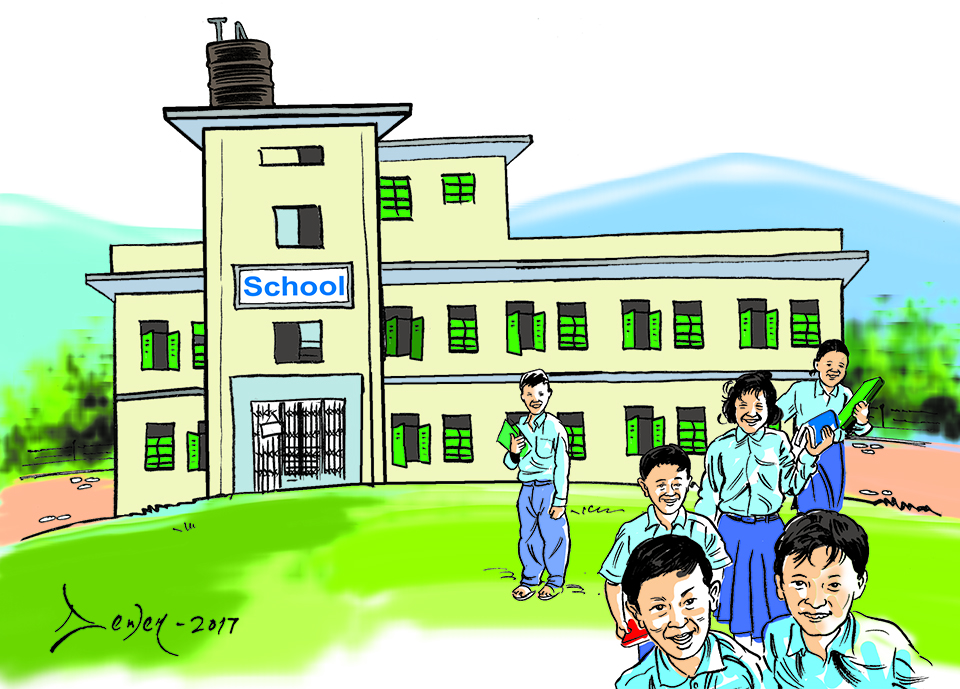KATHMANDU, May 26: The Office of the Auditor General (OAG)'s report has revealed that public schools in Nepal have more teachers than students in many places. Due to the government's failure to properly align teacher positions, some public schools have surplus teachers, while others face shortages. Especially in the Terai region, there is a high number of students but a shortage of teachers compared to the Himalayan and hill regions, according to the OAG report.
Moreover, the failure to align teacher positions has also resulted in the inability to assign subject-specific teachers to schools where they are needed.
This has led to learning outcomes in school education falling short of the state’s expectations, and government investment in education going to waste. According to the 62nd report of the OAG, the failure to allocate teachers based on the number of schools and students has negatively affected children's learning levels in classrooms.
EC spent millions in donor funds with no audit: OAG report

According to Rule 77 of the Education Regulation 2059 BS, the student-teacher ratio in community schools should be 40:1 in the Himalayan region, 45:1 in the hill region, and 50:1 in the Terai region. However, the OAG’s report reveals that in six of the seven provinces—Koshi, Bagmati, Gandaki, Lumbini, Karnali, and Sudurpaschim—the number of teachers in community schools exceeds the number required based on the prescribed ratio. In contrast, Madhesh Province has a higher number of students compared to the proportionate number of teachers.
According to the details in the report, the student-teacher ratio varies significantly across Nepal's geographic regions. In the Himalayan region, the average number of students per teacher at the basic level (grades 1–5) is 12.56. This increases to 20.42 students per teacher in grades 6–8 and slightly decreases to 19.61 in grades 9–10 at the secondary level. In the hill region, the ratios are even lower at the foundational level, with just 10.57 students per teacher in grades 1–5, rising to 17.22 in grades 6–8 and 21.83 in grades 9–10.
In contrast, the Valley and Terai regions show much higher student-teacher ratios, indicating a significant burden on educators. At the basic level, one teacher is responsible for 22.72 students, a figure that jumps to 38.69 in grades 6–8 and 35.64 in grades 9–10, underscoring the acute shortage of teachers in these densely populated areas.
The report states that across all levels of schools in Koshi, Bagmati, Gandaki, Lumbini, Karnali, and Sudurpaschim provinces, the number of students is lower compared to the number of teachers. However, in Madhesh Province, the student-teacher ratio exceeds the prescribed standard. In Madhesh, each teacher is responsible for 87.26 students in grades 6–8, and 60.50 students in grades 9–10.
“To ensure cost-effectiveness in public spending, teacher positions should be aligned across all local levels based on geographical conditions, population, and student numbers. However, alignment has been carried out in only 69 local levels,” the report states. “Only by managing teachers in accordance with the student-teacher ratio provisioned in the regulations can the quality of school-level education and children's learning outcomes be improved.”
According to the report, a total of 8.587 million students are enrolled across 37,900 schools nationwide, including pre-primary, basic, and secondary levels. There are 325,310 teachers working in these schools. Among the students, 5.635 million are studying in public schools, while 2.794 million are enrolled in private schools. In the previous year, the total number of students was 8.06 million.
According to the data, public schools make up 77.60 percent of the total schools, account for 65.62 percent of the students, and 65.40 percent of the teachers. Private schools represent 20 percent of the schools, with 32.54 percent of the students and 34.60 percent of the teachers. As per the report, the average number of students per school from pre-primary to secondary level is 201 in community (public) schools, 354 in institutional (private) schools and 114 in other types of schools.



































